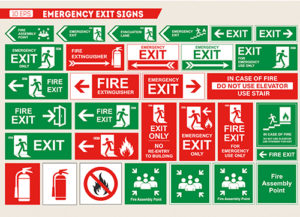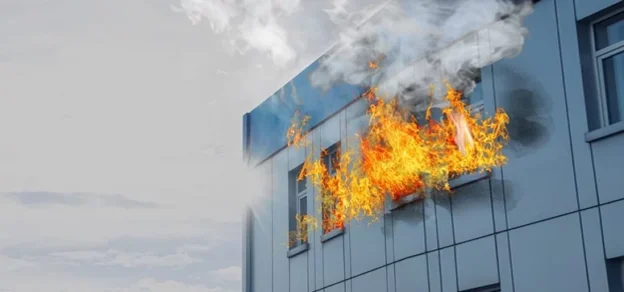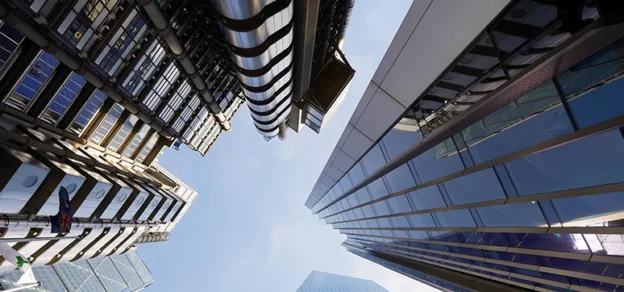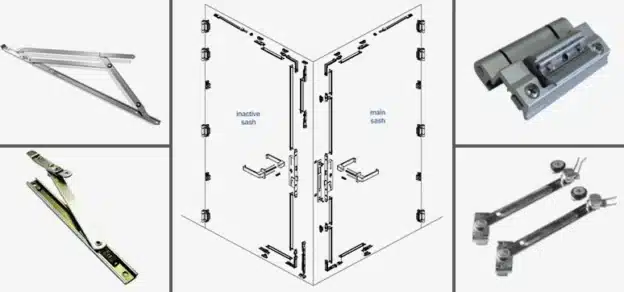It is critical that all stakeholders fully understand the importance of a robust fire strategy for the success of a project within the built environment. Relevant stakeholders not only include the client and project/ design team and the local civil defence, but may also include the water and electricity providers, transport authority and facility management companies, if appointed.
The understanding of the fire and life safety objectives and their implementation during the design and operational phase can be the key to future success or highlight areas of potential vulnerability in the safety of the building. Ultimately, the building design will require formal approval by the authority having jurisdiction (AHJ) and in the Middle East this will involve approval by the local civil defence department.

A fire strategy is not simply a key design document providing guidance to all disciplines on the code or engineered approach to be adopted during the design and construction process; it also details the management procedures to be implemented by the end user/occupier of the building. Guidance on fire safety management of the building requires specific consideration as design assumptions that the management of the building will be to a high standard can sometimes be made.
A copy of the fire strategy, along with the approved fire and life safety drawings, should be formally handed over to the occupier as it will ensure that the relevant information is passed to the people who have responsibility for daily operations and any future expansion plans, maintenance, fire safety, etc. The fire strategy is a ‘living’ document and should be referenced for any future building alterations and/or changes to management procedures.
As part of the development of a fire strategy, adopting the process outlined in British Standard (BS) 7974 (Application of Fire Safety Engineering Principles to the Design of Buildings – Code of Practice) can assist all members of the design team to work towards the common goal of a safe and operationally efficient building.
What Can Go Wrong?
Assumptions can be made that buildings meet the requirements of local fire safety legislation, codes, and that building owners consider fire safety a top priority, however, this isn’t always the case. Many established building operators may have used a variety of fire consultants and fire system contractors over the years and assumed that they were doing the right thing. But the reality can be different.
In Reality
Particularly following a serious fire with loss of life and/or severe property damage, the view is often taken that fire precautions were introduced in a fairly piecemeal fashion with no common theme or objective, with issues considered only as they occurred resulting in inconsistent changes to fire safety. A common area highlighted following investigations into an incident is that the management and fire protection systems installed within a building are often confusing, unnecessarily complex and fail to provide adequate protection in the event of a fire.
The Answer?

These issues can often be negated by the introduction of a plan that considers what the objectives to comply with fire safety legislation are and reach a higher standard that fully considers property protection, the environment and also protects the developers’/owners’ brand. The plan should look at all the key factors, not just those that are seen as relevant at that time but also follows a methodology and considers the present and future needs. This plan is the main intention of a fire strategy.
A fire strategy should consider all aspects of fire safety and protection in a unified manner and allow flexibility whilst ensuring that the key objectives have been met. The strategy should ensure that all key features of the building, occupancy and processes have been appropriately and properly covered.
Fire Strategy And Fire Engineering Process
Many building designs necessitate the adoption of a fire engineered approach as opposed to strictly following the recommendations of prescriptive code guidance. The framework contained in BS 7974 provides for the application of fire safety engineering, and is similar in that regard to the processes detailed in other performance-based design guides.
BS 7974 recommends four main steps in the design process, namely:
• Qualitative Design Review (QDR)
• Quantitative analysis of design
• Assessment against criteria
• Reporting and presentation of results
These stages provide important input into the development of a robust fire strategy, and it is during the QDR stage where the parameters that influence the fire safety design are discussed and agreed. Any key items that are not identified during the QDR, can impact the design development and be a risk to the project.
The Qualitative Design Review (QDR)

The main stages in the QDR process are identified in BS 7974 as the following:
• Review of architectural design and occupant characteristics
• Establish fire safety objectives
• Identify fire hazards and possible consequences
• Establish trial fire safety designs
• Identify acceptance criteria and methods of analysis
• Establish fire scenarios for analysis
The team formulated to carry out this process should be led by the project fire engineer(s) and is a key factor to the success of the final fire safety design.
The QDR team should include representatives from the following:
• The client, including members of, for example, security and facility management teams as they will have a fuller understanding of the operational requirements of the building to be considered during the design
• The architect who will understand the architectural aspirations of the client
• Engineering teams including mechanical, electrical and plumbing, transportation, landscaping, etc
• Site fire department (if applicable) for input into an operational response and access requirements including water supplies for firefighting (for example at an airport for airside operations)
• Civil defence as AHJ and responder to emergency incidents
• Contractor (if appointed)
The composition of the team may include other stakeholders and may vary from project to project. Having gained an understanding of the basis for design, it is also important to understand the key concepts and considerations of a fire strategy. This will give a complete understanding of the fire engineering design process and highlight areas within their own discipline (structures, MEP, etc.) that may require further analysis within a project during the design phases.
To support the operational effectiveness of a building, the importance of a robust fire safety management system being implemented should not be understated. The failure to manage the fire safety adequately often results in death or injury and loss of business confidence. This can have a significant impact on the physical and economic well being of society and impact on the organisational brand. The development of a fire safety management plan is often omitted from fire strategies across the region, however its inclusion should form a key and integral element of the approved document.














